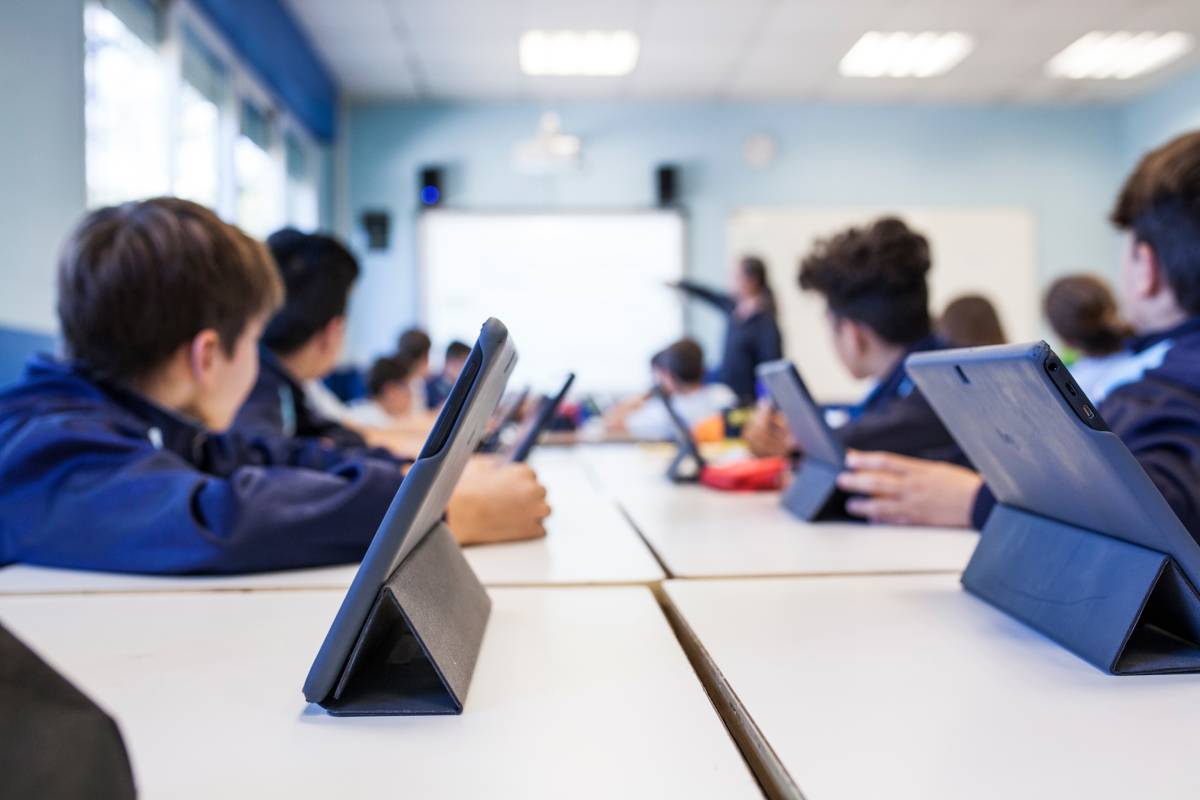Comprehensive Primary Science Tuition Singapore for Primary School Students
Comprehensive Primary Science Tuition Singapore for Primary School Students
Blog Article
Discovering the Various Teaching Techniques in Key Scientific Research Education Today
The landscape of main scientific research education is progressing, with numerous teaching strategies acquiring prestige in contemporary classrooms. Inquiry-based discovering, hands-on experiments, and the integration of modern technology are redefining just how educators engage young minds. Additionally, joint methods and set apart instruction are being employed to satisfy the varied needs of pupils, boosting both engagement and understanding. As we examine these techniques, inquiries arise regarding their efficiency and the implications for future educational methods. What might these shifts in technique mean for the following generation of students?
Inquiry-Based Knowing
Inquiry-Based Understanding (IBL) is a pedagogical approach that encourages trainees to discover scientific concepts via questioning, examination, and hands-on trial and error. This method stresses the role of trainees as energetic individuals in their discovering, advertising vital reasoning and problem-solving abilities. By engaging with real-world concerns, pupils end up being interested and determined, which improves their understanding of scientific concepts.
In IBL, instructors serve as facilitators, assisting pupils as they browse their inquiries as opposed to providing information directly. This student-centered strategy permits distinction, suiting numerous learning designs and paces. Pupils create skills in formulating hypotheses, designing experiments, and examining data, which are critical for clinical proficiency.
Additionally, IBL promotes collaboration amongst pupils, motivating them to share concepts and findings. This collective inquiry promotes social abilities and a feeling of neighborhood within the class. Additionally, the process of inquiry urges resilience, as pupils find out to accept failing as a stepping rock towards understanding.
Hands-On Experiments
Hands-on experiments are a crucial part of effective scientific research education, complementing the concepts of inquiry-based understanding. These experiments enable trainees to engage directly with clinical ideas, fostering a much deeper understanding through experiential learning. By adjusting materials and observing end results, young learners can grasp abstract concepts in concrete means.
Such tasks promote vital thinking and analytical skills, as trainees hypothesize outcomes, conduct experiments, and assess outcomes. This procedure encourages them to ask inquiries, fine-tune their understanding, and develop a scientific attitude. Hands-on experiments can be tailored to varied understanding styles, guaranteeing that all trainees have the possibility to involve meaningfully with the content.
Moreover, hands-on experiments usually encourage partnership among peers, promoting team effort and interaction abilities. Working in teams enables trainees to share ideas, review searchings for, and discover from one an additional, which boosts their total instructional experience.
Including hands-on experiments right into the key scientific research curriculum not only improves the finding out setting yet additionally grows a lifelong interest in science. By proactively taking part in their education and learning, students are more likely to develop an enthusiasm for clinical query that prolongs beyond the classroom.

Technology Integration
Incorporating modern technology into key science education and learning has come to be significantly necessary in promoting trainee interaction and improving discovering end results. The usage of digital devices, such as interactive simulations, virtual laboratories, and instructional software application, provides pupils with opportunities to discover clinical concepts in cutting-edge means. These sources promote a deeper understanding of complex topics by permitting students to imagine and manipulate variables that would certainly be not practical in a traditional class setup.
Additionally, modern technology combination encourages personalized finding out experiences. Students can advance at their very own speed, revisiting challenging concepts via multimedia sources, which satisfy various discovering designs. This versatility not only sustains individual development but visit additionally cultivates a feeling of autonomy in learners.
Furthermore, innovation works as a bridge to real-world science, attaching trainees with current research and specialist contributions. Access to scientific journals and on-line databases expands trainees' perspectives on clinical questions and promotes critical thinking abilities.
Collaborative Understanding
Joint understanding plays a crucial function in key science education by fostering team effort and interaction abilities amongst students. This strategy encourages students to collaborate, share knowledge, and participate in problem-solving, which boosts their understanding of clinical concepts. By joining team tasks, students find out to express their ideas, listen to diverse perspectives, and bargain services, every one of which are essential abilities in both academic and real-world contexts.

Study indicates that collective learning can lead to increased motivation and interaction in science subjects, as trainees locate pleasure in shared experiences (primary science tuition Singapore). Furthermore, this method prepares trainees for future collective ventures, outfitting them with the abilities essential for efficient team effort in college and expert settings. Eventually, welcoming collective understanding in primary science education and learning can dramatically enhance the understanding experience and advertise a deeper understanding of scientific questions
Distinguished Guideline

Separated guideline can show up in different means, such as differing the web content, procedures, or items of learning. Teachers might use tiered tasks that offer varying levels of complexity, permitting pupils to function at their respective preparedness levels. Additionally, adaptable organizing techniques try these out can help with cooperation amongst students with various abilities, fostering peer knowing.
Analysis plays a vital function in this technique, as it notifies direction and assists instructors comprehend each student's one-of-a-kind requirements. Developmental evaluations, such as observations and quizzes, can lead instructors in adjusting their techniques to boost discovering end results. primary science tuition Singapore. Eventually, by implementing differentiated guideline in primary scientific research education, teachers can grow a much more reliable and equitable discovering environment, equipping all pupils to reach their full capacity in recognizing scientific sensations
Conclusion
In recap, the varied teaching methods in primary scientific research education, including inquiry-based learning, hands-on experiments, modern technology combination, collective knowing, and differentiated instruction, jointly add to a more efficient discovering setting. These methods promote important reasoning, problem-solving skills, and a deeper comprehension of scientific concepts. By executing these methods, instructors can develop engaging and supportive classrooms that address the different requirements of trainees, eventually cultivating a long-lasting passion in science and boosting academic success.
Inquiry-Based Learning (IBL) is a pedagogical approach that encourages students to check out clinical principles through questioning, investigation, and hands-on experimentation.Collaborative discovering plays an essential duty in key scientific research education by promoting team effort and communication abilities amongst pupils.Research indicates that collective learning can lead to enhanced inspiration and involvement in science subjects, as pupils find pleasure in shared experiences.In cultivating a comprehensive knowing environment, set apart guideline emerges as a vital method to fit the diverse click site demands and capacities of pupils in key scientific research education and learning. Inevitably, by carrying out differentiated guideline in main scientific research education and learning, instructors can cultivate a more efficient and equitable knowing atmosphere, encouraging all trainees to reach their full possibility in comprehending clinical sensations.
Report this page